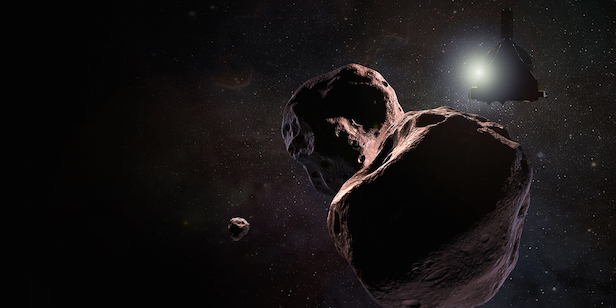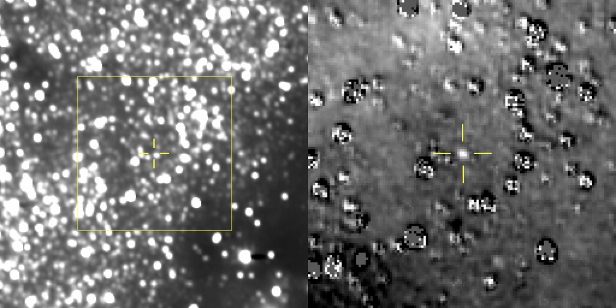New Horizons Update: Ultima Thule has been spotted ahead of its flyby
NASA’s spacecraft will examine the rare Kuiper Belt object on 1 January 2019, and now it has the object in its sights

New Horizons will rendezvous with Ultima Thule as part of the New Year celebrations for 2019. Image credit: NASA/APL/SwRI/Steve Gribben
NASA’s New Horizons spacecraft has made its first detection of its next flyby target, the Kuiper Belt object nicknamed Ultima Thule, more than four months ahead of its New Year’s 2019 close encounter.
Mission team members were thrilled – if not a little surprised – that New Horizons’ telescopic Long Range Reconnaissance Imager (LORRI) was able to see the small, dim object while still more than 160 million kilometres (100 million miles) away, and against a dense background of stars. Taken 16 August 2018 and transmitted home through NASA’s Deep Space Network over the following days, the set of 48 images marked the team’s first attempt to find Ultima with the spacecraft’s own cameras.
“The image field is extremely rich with background stars, which makes it difficult to detect faint objects,” says Hal Weaver, New Horizons project scientist and LORRI principal investigator from the Johns Hopkins Applied Physics Laboratory in Laurel, Maryland, United States. “It really is like finding a needle in a haystack. In these first images, Ultima appears only as a bump on the side of a background star that’s roughly 17 times brighter, but Ultima will be getting brighter – and easier to see – as the spacecraft gets closer.”

Left is a composite image produced by adding 48 different exposures from the News Horizons LORRI. Right is a magnified view of the region in the yellow box, after subtraction of a background star field “template” taken by LORRI before it could detect the object itself. Ultima is clearly detected in this star-subtracted image and is very close to where scientists predicted. Image credit: NASA/JHUAPL/SwRI
This first detection is important because the observations New Horizons makes of Ultima over the next four months will help the mission team refine the spacecraft’s course toward a closest approach to Ultima, at 4:33 a.m. Coordinated Universal Time (12:33 a.m. Eastern Time) on 1 January 2019. That Ultima was where mission scientists expected it to be – in precisely the spot they predicted, using data gathered by the Hubble Space Telescope – indicates the team already has a good idea of Ultima’s orbit.
The Ultima flyby will be the first-ever close-up exploration of a small Kuiper Belt object and the farthest exploration of any planetary body in history, shattering the record New Horizons itself set at Pluto in July 2015 by about 1.6 billion kilometres (1 billion miles). These images are also the most distant from the Sun ever taken, breaking the record set by Voyager 1’s “Pale Blue Dot” image of Earth taken in 1990. (New Horizons set the record for the most distant image from Earth in December 2017.)
“Our team worked hard to determine if Ultima was detected by LORRI at such a great distance, and the result is a clear yes,” says New Horizons Principal Investigator Alan Stern, of the Southwest Research Institute in Boulder, Colorado, United States. “We now have Ultima in our sights from much farther out than once thought possible. We are on Ultima’s doorstep, and an amazing exploration awaits!”
Keep up to date with the latest news in All About Space – available every month for just £4.99. Alternatively you can subscribe here for a fraction of the price!




